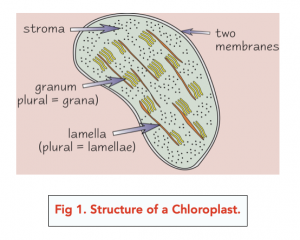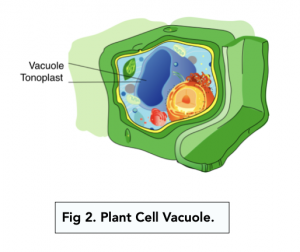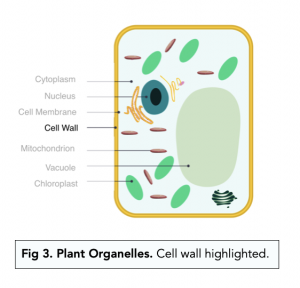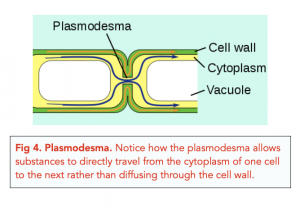Eukaryotic Cells: Plant Cell Organelles (A-level Biology)
Eukaryotic Cells: Plant Cell Organelles
Chloroplasts
- Chloroplasts are found in algae and plants. Chloroplasts small, flattened structures found in plants and algae. Chloroplasts are key for photosynthesis.
- Chloroplasts have small circular DNA and 70s ribosomes. This is similar to mitochondria which also has small circular DNA and 70s ribosomes.
- Chloroplasts are membrane bound organelles. Keeping with the theme of most eukaryotic cells.
- Chloroplasts have an inner membranes called the thylakoid membranes. The thylakoid membranes are very important structures in chloroplasts. These membranes are small and thin and can be stacked up into structures called grana (one stack is a granum). These grana are connected to each other by thin pieces of thylakoid membrane called lamellae. Grans contain chlorophyll.
- The inside of the chloroplast is filled with stroma. Stroma is a thick, viscous fluid that fills up most of the chloroplast.
- Light-dependent reactions take place in chlorophyll. Photosynthesis involves several reactions; some are light dependant, others are not. The light dependent dependant reactions of photosynthesis take place in the chlorophyll.
- Different parts of photosynthesis take place in different parts of the chloroplast. Some parts take place in the chlorophyll in grana, and other parts take place in the stroma.

Cell Vacuole
- Plant cells have vacuoles. Plant cells have vacuoles, which are surrounded by a membrane called a tonoplast. A few animal cells can have vacuoles.
- The vacuole contains a cell sap. The cell sap is a store of chemicals and mineral ions (including salts and sugars).
- The vacuole helps maintain pressure in a plant cell. The vacuole maintains pressure by pushing the cytoplasm against the cell wall, which helps keep the plant cell turgid and prevents plants from wilting.
- The vacuole isolates harmful chemicals from the rest of the plant cell. The tonoplast around the vacuole separates the contents of the vacuole (which can contain waste cell materials) from the cytoplasm of the cell.

Cell Wall
- The cell wall is found in plant cells, algal cells, and certain fungal cells. The cell wall is a very strong structure that is made up of the carbohydrate polymer cellulose. In fungal cells, it is made of chitin. Some bacteria also can have cells walls.
- The main function of the cell wall is to support the cells. The cell wall gives the cell structure, which prevents it from changing shape. It also offers a small level of added protection.
- The cell wall is freely permeable. Unlike the cell surface membrane, which forms a phospholipid barrier, the cell wall is permeable to all soluble substances which can pass through the small pores in the cell wall.

Plasmodesmata
- Plasmodesmata are small channels across cell walls. Plants and some algae cell walls have small channels throughout its length called plasmodesmata.
- Plasmodesmata allow cell-to-cell transport and communication. Cell walls are freely permeable to small proteins and other solutes; however, plasmodesmata allow substances to directly travel from the cytoplasm of one cell into the another’s.

Plant cell organelles are specialized structures within plant cells that perform specific functions. These organelles include the nucleus, endoplasmic reticulum, Golgi apparatus, mitochondria, peroxisomes, and chloroplasts.
The nucleus is the central control center of the plant cell and contains the cell’s DNA. It is responsible for controlling cell growth and division, as well as regulating gene expression and maintaining the integrity of the genome.
The endoplasmic reticulum (ER) is a network of tubules and flattened sacs that is involved in the synthesis, folding, and transport of proteins. In plant cells, the ER also plays a role in the production and transport of lipids and other substances.
The Golgi apparatus is a stack of flattened sacs that is involved in the modification, sorting, and packaging of proteins and lipids for transport to other parts of the cell or outside the cell.
Mitochondria are the energy-producing organelles in a plant cell. They generate ATP (adenosine triphosphate), the energy currency of the cell, through the process of cellular respiration.
Peroxisomes are small, membrane-bound organelles that are involved in various metabolic processes, including the degradation of fatty acids and the detoxification of harmful substances.
Chloroplasts are unique to plant cells and are responsible for photosynthesis, the process by which plants convert light energy into chemical energy stored in organic compounds such as sugars. Chloroplasts contain chlorophyll, the pigment that absorbs light energy, as well as other pigments and specialized membrane systems.
Plant cell organelles are essential for the survival and growth of plants. They perform a wide variety of functions, including producing energy, synthesizing and transporting proteins and lipids, detoxifying harmful substances, and converting light energy into chemical energy. By working together, plant cell organelles enable plants to carry out the complex processes necessary for growth and reproduction.





Still got a question? Leave a comment
Leave a comment